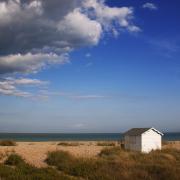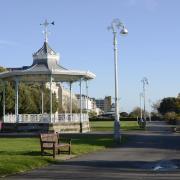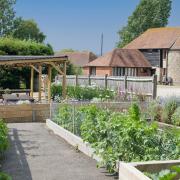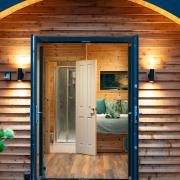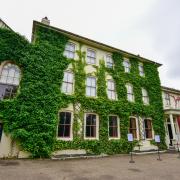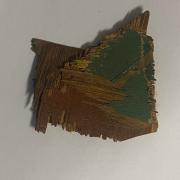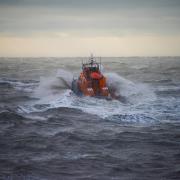Early in 2017, inspired by the railway posters of the 30s and 40s, I started illustrating some of the lighthouses along Ireland’s south coast. This quickly grew into a collection that culminated in a best-selling book “Lighthouses of Ireland”. During this time, I spent a holiday in Cornwall which spurred me to consider painting some of the lighthouses on the Cornish and Devon coastlines. Before you knew it, I was pouring over maps from Somerset to Scotland.
The collection now runs to over 350 lighthouses and are available to buy as signed prints at lighthouseeditions.com and a selection of these will appear in my new book Lighthouses of Britain and the Isles which will be published by Watkins in the spring of 2024.
While at their core, these structures are simply towers and beacons, our lighthouses have captured the imagination in a way that few other buildings have. Maybe it's the idea of strength and resilience, a guiding light in the darkness, that feels so relevant in our challenging times, but everyone seems to have a favourite. The lighthouse represents a unique part of our maritime history and an aesthetically pleasing part of our built heritage. Long may they continue to shine.

Margate
Margate’s first lighthouse was designed by the architect William Edmunds and was completed in 1829. to mark the town’s newly built breakwater.
The original lighthouse was in the shape of a Doric column similar to the famous west pier lighthouse at Whitby, North Yorkshire. It had a square gallery and cylindrical lantern, but this tower fell victim to the Great Storm of 1953 when surging seas toppled the old tower, leaving it leaning at a precarious angle for several hours, after which it collapsed, taking with it a substantial section of the pier end.
In 1955, the current octagonal concrete tower was built, topped by a copper lantern housing a fixed red LED light.
This lighthouse features on the series G Bank of England £20 note along with the Turner Contemporary.
“Mrs. Booth,” or “The Shell Lady” as she’s affectionately known stands alongside the tower, gazing out to sea and was created in 2008 by sculptor Ann Carrington. The sculpture is a tribute to Sophie Booth, landlady and lover to J.M.William Turner.

North Foreland
There are reports of a beacon on the promontory as far back as 1499 but the first reliable record of lights on this coast come from 1636 when Charles I granted Sir John Maldrum a licence to operate and maintain the lighthouses which appear to have been already extant on the North and South Forelands. By 1719 ownership of both the North and South Foreland lights had passed by will to the Trustees of Greenwich Hospital and whatever profits the light made went towards a hospital dedicated to seamen. About 1793 work began on extending the height of the lighthouse by two storeys and the coal fire was at this stage replaced by 18 oil lamps along with a new optical system designed by Thomas Rogers. In 1832 the lighthouse was purchased by Trinity House and in 1858 a new spacious lantern room was added to the tower.
North Foreland was the last Trinity House lighthouse to be automated; the occasion was formally marked at a ceremony presided over by HRH The Duke of Edinburgh in 1998 in his capacity at the time as Master of Trinity House. The lighthouse is now monitored and controlled from Trinity House’s Planning Centre in Harwich, Essex.

Ramsgate
The 11m high lighthouse situated on Ramsgate’s West harbour arm was built in 1842 and is a Grade II listed building. It replaced a previous tower built by Samuel Wyatt in 1795 which had been poorly positioned and suffered damage from passing ships.. Operating as a rear range light. It now shows a fixed red light; originally the light varied from red to green depending on the height of the tide at the harbour entrance. The front range light is mounted on a pole at the end of the east pier and shows a white occulting light visible for 6.5 km.
Now powered by electricity, originally the lighthouse was illuminated by an oil lamp, using a fourth-order Fresnel lens to focus the beam.
Carved in the stonework of the lighthouse are the words ‘PERFUGIAM MISERIS’, which are translated as ‘refuge for those in need’

South Foreland
The presence of a guiding light at South Foreland is mentioned as early as 1367. It’s generally credited to a hermit living in a nearby cave who lit some form of beacon at the mouth of his grotto, but the details are sparse. By 1636 the first lighthouse proper ( if a tower primarily composed of wood and plaster can be considered proper!) had appeared. This used a coal fired brazier at the top and operated in conjunction with a second tower situated about 70 metres from the cliff, thereby creating a leading light to guide vessel past the Goodwin Sands.
The lighthouses were rebuilt in the 1830’s, though the Low or front light was discontinued in 1904 as the sands had migrated. The High light was then reconfigured to a rotating first order lens visible for 42km. The lighthouse was eventually decommissioned in 1988 and is now under the care of the National Trust

Dover - Dover Castle Pharos
Dover Castle Pharos is one of only three extant Roman era lighthouses. The other two are La Caroña in Spain (the oldest lighthouse in use) and Leptis Magna in Libya.
The Pharos was probably one of a pair; the other situated on the high ground opposite, which guided vessels towards the entrance to the harbour in the Dour estuary below.
The tower was designed to communicate not only with the second lighthouse on the Western Heights but with Cap Gris Nez on the French coast. A coal burning brazier flared from the top floor of the tower and we know from coal fired beacons of the middle ages, that they could consume over 200 tons of coal a year, or almost a ton a day. The job of keeping the tower supplied with fuel was immense.
The tower stands 15.8 metres high and is 12.2 metres wide at the base although the original Roman fabric only survives to a height of 12.5 metres. The higher parts of the wall were added later to act as a belfry for the Anglo-Saxon church of St Mary in Castro that was later built beside the Pharos. This probably ensured its survival and prevented it from being used as a source of stone for other buildings in the castle grounds.

Dover - Prince of Wales Pier
The Prince of Wales Pier Lighthouse was started in 1892 and finished ten years later in 1902. The only one of the Dover Harbour lighthouses to be made of stone, when it was built, a cast-iron pier connected the stone causeway it sits on with the land, allowing ships to berth alongside. The pier was named after Edward VII, who, as Prince of Wales, laid the foundation stone in 1892. A railway track was laid on the pier in 1905, as it was envisaged that it would become an embarkation point for large Atlantic liners. The trade flourished for a mere two years, but about this time, a café was built around the base of the lighthouse. The Lighthouse Café or the “nearest café to France” as it was known, had an enviable view of all the comings and goings in the busy harbour and on a clear day you could see right across to the French side, just over 20 miles away.
In 2015, the Port of Dover closed the Prince of Wales pier to the general public as part of their redevelopment of the Western Docks. A fantastic new marina has been built alongside the pier, but the Lighthouse sadly, remains out of bounds.

Folkestone
Ships and boats have been landing on the shore of Folkestone since Roman times, but the ever migrating shingle makes grounding heavy boats next to impossible and loading and unloading cargo a chore. King Henry VIII had planned to turn Folkestone into a major embarkation point for troops and supplies and detailed plans were duly produced, but by 1542, Henry’s focus had shifted to nearby Dover and plans to develop Folkestone Harbour would be shelved for almost three centuries. In 1807 with the emerging French threat focusing minds at Parliament, a new act was passed to provide anchorage for warships and support vessels at Folkestone and within 3 years the West Pier was complete.
By 1849 almost 60,000 passengers were using the harbour per year and over the next 50 years the resort grew into a fashionable coastal resort town. In 1860 the present, 8.5 metre tall sandstone lighthouse was unveiled with a light showing two white flashes every ten seconds and visible for twelve miles.
The lighthouse was fully refurbished in 2011. On the lighthouse walls, the inscription reads; ‘Weather is a Third to Place and Time’; lines from a poem by Ian Hamilton Finlay to remind us how important the weather is to all who work at sea.

Dungeness
By the early 1960’s a major lighthouse hadn’t been built in these islands for over fifty years. The image of these sentinels was very 19th century and when it was unveiled on 20th November 1961, the new Dungeness tower turned out to be a very welcome marriage of bold new architecture while also acknowledging the legacy of its older brothers. It is constructed of precast concrete rings 1.5 metres high, 15 cm thick and 3.6 metres in diameter, fitted one above the other, and has black and white bands which are impregnated into the concrete. It was the first lighthouse to be equipped with a flashing xenon arc lamp as its light source. Despite the brave new sheen of its modern light technology, it was soon retro fitted with sealed beam units when the xenon arc lights were deemed unsuitable. In addition to the main light, sector lights are displayed, from windows just below the lantern floor. Since 1962, the tower has been floodlit from seaward, to aid visual identification and to reduce the mortality rate of migrating birds, which had been prone to hitting the tower at night during the migrating season.

Dungeness old
With its deceptive shifting banks of sand and shingle, Dungeness point has a long and formidable reputation as a graveyard for shipping.
Over time there have been eight lighthouses built at Dungeness, five main or high lights and three low lights- the fifth of the high lights is the current operational tower.
The first light on this coastline was a simple coal fired brazier whose illumination served to warn sailors of the danger along the spit. Time and tide eventually got the better of this pioneering light and in 1615, the tower was pulled down and the first of a series of new structures- this one known as Lamplough's Tower -was build nearer the point.
By the turn of the twentieth century, it was again apparent that the then current lighthouse was inadequate and this new structure known as the High Light Tower was raised 50 metres from the previous lighthouse. When it was decommissioned it was painted black so as not to confuse it with the present operational tower. It is no longer owned by Trinity House and is now open to the public.











